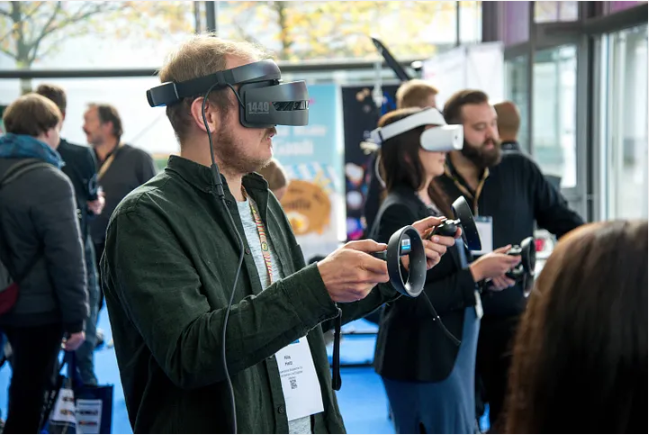In recent years, blockchain technology has rapidly gained attention across various industries, and the gaming industry is no exception. The emergence of blockchain-based games has introduced novel ways for players to engage with digital worlds, bringing benefits such as decentralization, enhanced security, and true ownership of in-game assets. But what exactly distinguishes blockchain games from traditional games? Let’s dive deeper into the fundamental differences and explore how these two gaming paradigms compare.
What Are Traditional Games?
Traditional games refer to digital or physical games that are developed and managed by a centralized entity—typically a game developer or publisher. Examples include iconic titles such as Mario Bros, Call of Duty, and Candy Crush. In these games, the developer retains full control over the game’s ecosystem, including all in-game assets, rules, and progression systems. Players interact within the boundaries set by the developers but do not own the assets they earn or purchase in-game. For instance, if you buy a special weapon or character skin, it essentially remains the property of the game company, and you’re granted only limited rights to use it within the game.
What Are Blockchain Games?
Blockchain games, on the other hand, are built on blockchain technology—a decentralized, distributed ledger system that records transactions securely and transparently. In blockchain games, players truly own their in-game assets, which exist as unique digital tokens known as non-fungible tokens (NFTs). These NFTs are stored on the blockchain, enabling players to freely trade, sell, or transfer their assets independently of the game’s developers. This ownership model shifts control from centralized entities to the players themselves, fostering a new kind of player empowerment and economic participation.
Key Differences Between Traditional and Blockchain Games
1. Ownership and Trading of Assets
One of the most significant distinctions lies in asset ownership. Traditional games keep all assets under the control of the developers. Players may buy or earn items, but these assets remain locked within the game environment with no real-world value outside of it. In contrast, blockchain games tokenize these assets as NFTs, granting players real ownership rights. This means players can trade, sell, or even use their digital assets across different games or platforms, creating a vibrant digital economy that extends beyond the game itself.
2. Decentralization
Traditional games are centralized systems controlled by developers who can alter game rules, assets, or access at will. This central authority can also ban players, restrict content, or modify the economy. Blockchain games operate on decentralized networks where no single entity holds absolute control. Instead, rules and transactions are governed by blockchain protocols and, in some cases, community voting mechanisms. This decentralization promotes transparency, fairness, and a democratic gaming environment.
3. Security
Security is a vital consideration in gaming. Centralized games are vulnerable to hacks, cheating, and fraud, often because their databases and servers are controlled by a single entity that may become a target for cyberattacks. Blockchain games leverage cryptographic algorithms and distributed ledger technology to secure players’ assets. The immutability of blockchain records ensures that transactions cannot be tampered with, reducing the risk of fraud and providing players with peace of mind regarding their digital possessions.
4. Gameplay Dynamics
Traditional games tend to have fixed rules and gameplay mechanics designed and enforced by developers. Player interaction and influence on game economics or structure are limited. Blockchain games introduce new dynamics by allowing players to interact with decentralized systems, participate in governance, and influence game evolution. This can lead to more engaging, player-driven ecosystems where user-generated content and community decisions shape the game’s future.
5. Monetization Models
Monetization in traditional games primarily comes from upfront purchases, subscriptions, or microtransactions for in-game items and cosmetic upgrades. Players spend money but generally do not earn financial returns. Blockchain games, however, enable players to monetize their involvement by buying, selling, and trading NFTs that hold real-world value. Some blockchain games even reward players with cryptocurrency for participation or achievements, blending gaming with the emerging play-to-earn economy.
The Future of Gaming: Coexistence and Evolution
Both traditional and blockchain games have distinct advantages and will likely coexist as the gaming landscape evolves. Traditional games benefit from established brand recognition, polished gameplay, and broad accessibility. Many players appreciate the familiar experiences these games offer.
Meanwhile, blockchain games hold the potential to revolutionize gaming by redefining ownership, enhancing security, and creating new economic models. However, they face hurdles such as complex user interfaces, regulatory uncertainties, and the need for broader adoption of blockchain technology. As these challenges are addressed, blockchain games may gain mainstream traction and reshape how players interact with digital worlds.
Final Thoughts
Traditional games and blockchain games each offer unique experiences. Traditional games provide well-crafted, centralized environments with polished gameplay, while blockchain games empower players through decentralized ownership, enhanced security, and innovative monetization opportunities. As blockchain technology matures and gaming communities become more familiar with its possibilities, we can expect a fascinating evolution in how games are created, played, and monetized—paving the way for a new era of interactive entertainment.

